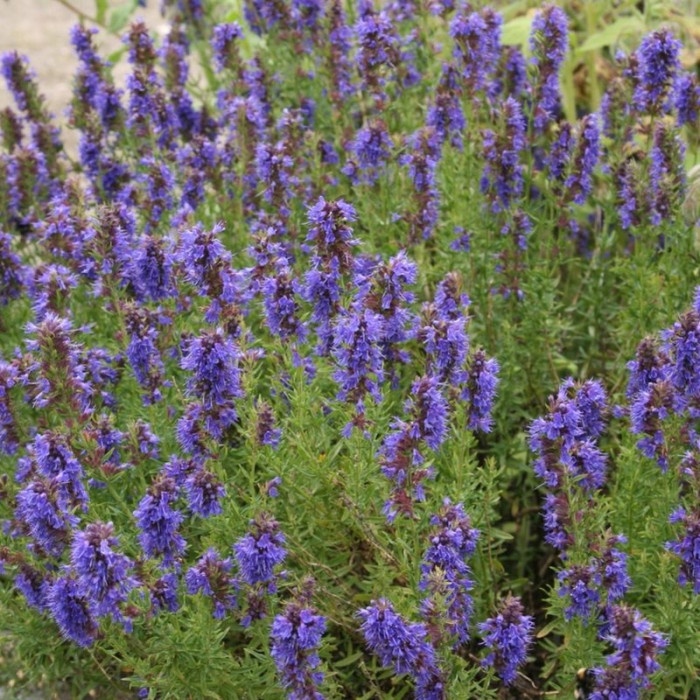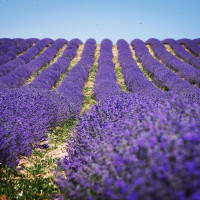Hyssop officinalis «National» or Blue St. John's wort / Hyssopus - a genus of plants of the tribe Mint (Mentheae) of the Lamiaceae family. In the people, hyssop officinalis is called a sacred herb, since this plant has been used as a folk remedy since ancient times.
Perennial strongly odorous herbs or shrubs 50-60 cm tall with linear or oblong leaves. Stems are branched, tetrahedral, hollow, shortly pubescent at the base.
The leaves are dark green, almost sessile, opposite, lanceolate, 2-4 cm long, 4-9 cm wide. They have a pleasant aroma and a bitter-spicy taste.
Flowers irregular (zygomorphic), mostly blue, in apical spicate inflorescence. Small, two-lipped, lilac, dark blue, pink or white, arranged 3-7 in leaf axils. Blooms from June to September.
Hyssop is used as a decoction or infusion for diseases of the gastrointestinal tract, rheumatism, diseases of the upper pulmonary tract, excessive sweating, as an antihelminthic, expectorant, and also to calm the nervous system.
The flowers, as well as fresh and dry leaves of hyssop, have a pleasant aroma with a spicy camphor taste. When canning tomatoes, cucumbers, add a sprig of hyssop. Hyssop is also used as a seasoning for pea and vegetable dishes. Since hyssop has a very pungent odor, it is added to dishes in small quantities.
Hyssop flowers are an excellent honey plant, so it is advisable to sow it near bee-pollinated crops to attract bees.
The more bees there are on your site, the more fruitful your vegetables will be!

No questions about this product, be the first and ask your question.














